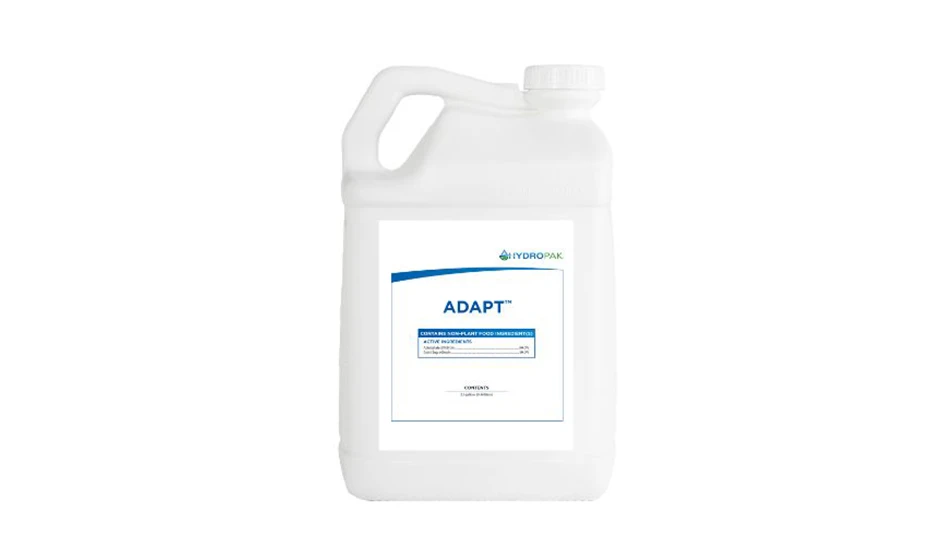
Matt LaWell (5)
Before becoming a father, before becoming the superintendent loaded up with responsibility, before becoming the trusted agronomic expert of a benevolent billionaire, Jason Stewart was just another young maintenance team member at Brickyard Crossing at Indianapolis Motor Speedway. Life seemed so simple back then.
“When my wife, Denise, and I got out of school, we bought a house and lived two blocks away,” Stewart says. “There were no cameras, there was no security. It was our playground. We would just come in here and drive on the track. I could go fishing at night. I could play golf, we could ride our bikes, whatever we wanted.
“I was probably making $11 an hour. It was all worth it.”
So much has changed since Stewart arrived at IMS in May 1999. He was promoted in 2002 to assistant superintendent of Brickyard Crossing, the Pete Dye renovation that sits next to — and, for four holes, within — the famous racetrack, then again in 2017 to superintendent and in 2020 to grounds superintendent of the whole property. He likes to joke that he just outlasted everybody else.
The grounds Stewart is responsible for includes around 1,000 acres of land — about 600 of them covered in turf, and about a quarter of that total devoted to the golf course. Beyond turf, Stewart and his team tend to flowers, landscape, so many gravel lots and roads, everything around the Indianapolis Motor Speedway Museum that attracts more than 140,000 visitors annually. “There are areas where it’s just a couple hundred feet in between fences,” Stewart says. “I still have yet to measure how many miles of fence line we have.”
How does he make everything work?

Brickyard Crossing was relatively flat before Pete Dye moved more than 1 million cubic feet of land during an early 1990s renovation.
The right hands
Stewart works closely with senior grounds manager Phillip Fischer, who focuses on the golf course, and Ryan Franklin, who focuses on literally everything else — and he’s quick to praise their work at and away from the Speedway.
“Both of them make time for community service,” he says. “To me, that was a big deal. They’re human. It always gets stressful here. Just trying to find the right chemistry. Who’s serious but also likes to have fun? It’s not easy.”
Franklin, a former college swimmer, officiates youth sports, and both he and Fischer volunteer with Big Brother Big Sister and the Special Olympics. “Those are key indicators to me that they have integrity and a higher purpose,” Stewart says. “If you don’t have something other than turf, then it’s just a grind. You can become myopic and miserable.”
The IMS grind starts in February, when mowing schedules are mapped through Memorial Day weekend and the Indianapolis 500. “You have about six weeks to really plan everything,” Franklin says. Everything builds to the 500, when more than 300,000 people fill up the grandstands. Afterward, “you have to go through the cleaning process,” he says. “You loaded everything in, and now you have to load everything out.” The Brickyard 400 follows in late July or early August.
“We make it sound insane,” Stewart says. “Maybe we’re just conditioned to it, but it’s not that bad. The biggest thing, for me, has always been the dropoff after the race. You’re building and building, and then it’s over, and everybody leaves. You try to keep the energy up — and you try to keep everybody else up.”

This bucolic spot is in the middle of an urban downtown, and just feet from a 300,000-seat racetrack.
The team
When Stewart started working at Brickyard Crossing almost 25 years ago, the number of tasks and crew members was significantly lower. Even during his subsequent promotions, the team never seemed to outgrow the maintenance facilities.
Those days are over.
The roster has expanded ever since Roger Penske, that aforementioned benevolent billionaire, purchased IMS in January 2020. The golf course maintenance team has grown from 12 full-timers to 15 — including Karl Ewoldt and Eddie Platt, the only folks who have worked at the course longer than Stewart — with another 15 to 20 seasonal employees. The overall headcount across golf and grounds hit 79 earlier this year.
And communication is even more key among team members than at most golf courses: Cars zip around the track at speeds topping 200 mph far more frequently than just two weeks out of the year. One October Monday was filled with eight hours of ear-splitting time trials. Even if team members get used to the noise, they still need to be aware of when they can travel across the track.
“We have to project out a week in advance and build that schedule for the track,” Stewart says. “You’re always looking at weather and tee times for the golf course and you kind of know what days you have outings, but with the track, you can’t just slip in there and do things. It has to be a little more regimented and you have to keep your finger on the pulse.”
“It’s a lot of communicating,” Fischer says. “There’s signage out there when the track’s hot. It’ll flash red. And you have to know: Is the oval hot, or is the road course hot?”
With four holes to maintain inside the track, the Brickyard Crossing team has a different definition of pace of play.

The course featured 27 holes from 1965 to 1993, and nine infield holes from its opening in 1929 until Dye's renovation. Dye kept a quartet of holes inside the track.
The interns
In addition to dozens of maintenance team members, Stewart, Fischer and Franklin welcomed 23 interns last year — and none of them were turf majors.
“They apply because of the Speedway,” Stewart says. “We have these connections with all the local sports teams, and we kind of sell it that way, but we don’t lie to them. You will be working on the golf course, you will use a string trimmer, but we’ll set you up with opportunities to work with the Colts, the Pacers, other golf courses.
“One of our assistant grounds managers was an intern, then we hired him and he worked for us for a year. He always wanted to be in racetrack operations and he just took a job down in Austin at Circuit of the Americas. We hate to lose him, but that’s how it works. Build ’em up and send ’em out.”
Stewart credits Fischer for further developing the internship program, which now includes sales ridealongs and trips to Victory Field — where the head groundskeeper, Joey Stevenson, is a former IMS employee — and Stewart’s alma mater, Purdue University. Interns are also tasked with building a capital improvement program for any project that checks in at more than $5,000. Oh, and they need to write a résumé, of course.
“It's hilarious,” says Fischer, who updates his own résumé once a year to provide interns with an example. “Because I read the résumé, Ryan reads the résumé, Jason reads the résumé, and we all give them feedback, and it must make their heads spin.”
“We have these mock interviews with our interns,” Stewart adds. “I bring in HR and another department head, and we sit down in a formal setting, and these kids are a wreck. They’re still in school, they’ve never had a setting like that. And even our best performers, they’re stepping all over their words. You know they’ve rehearsed these things and they just can’t get them out. But that’s where they get better. Go do it. Make a mess of it. Force yourself to go in there and do the best job you can. Prepare for it, but be OK with messing up, because you’re learning. You either win or you learn.”

The racetrack is seldom out of sight.
That billionaire owner
Stewart does have one advantage that most turf pros don’t: Penske, a billionaire owner who adores both the golf course and Stewart’s work.
“He loves this place,” Stewart says. “He’s been completely hands-on. During the pandemic, we would just drive around and he would point at everything: ‘What are you going to do with this? What about that tree? What about this over here?’ He did that for a couple years, really.”
Stewart talks regularly with Penske Entertainment Group president and CEO Mark Miles — the previous IndyCar CEO who helped land Super Bowl XLVI in Indianapolis — but he reports directly to Penske, not a board or a committee. That rendered a 2019 master plan pretty much moot.
“I used to think everything had to be done with a master plan,” Stewart says. “You’re taught that you need to come in and say, ‘This is how much money we spend, and this is what we spend it all on.’” Instead, Penske, 86, wants the next important thing. “I’ve watched him do it over and over and over, and it’s amazing how it works, and it goes against everything I was ever taught about building a master plan.”
Stewart’s situation is unique, and he knows it. “This isn’t a golf course,” he says. “It’s a racetrack with a golf course.”
Matt LaWell is Golf Course Industry’s managing editor.
Latest from Golf Course Industry
- Envu Superintendent Grant Program sending 10 members to 2025 GCSAA show
- Editor’s notebook: Let’s chat about AI
- Wonderful Women of Golf 43: Melissa Gugliotti
- This month on Superintendent Radio Network: December 2024
- Mark Hollinger, ASGCA, dies at 70
- Tartan Talks 102: Chad Goetz
- Don’t fly by the seat of your pants
- Golf Construction Conversations: Reed Anderson





